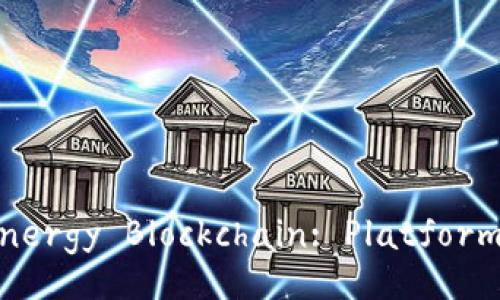Exploring the World of Energy Blockchain: Platforms and Thei2024-07-07 22:41:44
I. Introduction
II. Overview of Energy Blockchain Platforms
III. Development of Energy Blockchain Platforms
IV. Common Questions About Energy Blockchain Platforms
V. Conclusion
I. Introduction
In recent years, the use of blockchain technology in the energy industry has gained traction. The development of energy blockchain platforms has the potential to revolutionize how energy is generated, distributed, and consumed. This article explores leading energy blockchain platforms and their development.
II. Overview of Energy Blockchain Platforms
1. PowerLedger
PowerLedger is an Australian company that has developed a blockchain-based peer-to-peer (P2P) energy trading platform. PowerLedger allows users to buy and sell renewable energy to their neighbors and manage their energy consumption.
2. WePower
WePower is a blockchain-based green energy trading platform that connects renewable energy producers directly to energy consumers. WePower allows renewable energy producers to raise capital by selling their energy production upfront and offers consumers access to cheaper, more transparent, and sustainable energy options.
3. GRID
GRID is a platform that uses blockchain technology to let customers buy energy directly from wholesalers at wholesale prices. It uses the BOLT token and a mobile application to purchase electricity directly from the grid, bypassing traditional energy retailers.
III. Development of Energy Blockchain Platforms
1. Advantages of Energy Blockchain Platforms
Energy blockchain platforms offer several advantages over traditional energy models, such as improved transparency, enhanced security, and increased efficiency. By using blockchain technology, energy transactions can be tracked and verified in real-time, reducing the risk of fraud and increasing reliability.
2. Challenges Facing Energy Blockchain Platforms
Energy blockchain platforms face several challenges, including regulatory and legal issues, scalability, and interoperability. The lack of standardization and interoperability between energy blockchain platforms also presents a challenge.
IV. Common Questions About Energy Blockchain Platforms
1. What is an energy blockchain?
An energy blockchain is a secure, transparent, and decentralized ledger technology that can be used to record and track energy transactions.
2. What are the benefits of energy blockchain?
Energy blockchain provides enhanced transparency, improved security, increased efficiency, and reduced cost for energy transactions.
3. What technologies are used in energy blockchain platforms?
Energy blockchain platforms use several technologies, such as smart contracts, decentralized ledger technology (DLT), and Internet of Things (IoT) devices.
4. Are there any regulatory barriers to energy blockchain adoption?
Yes, regulatory barriers are a significant challenge facing energy blockchain adoption. Regulations vary from country to country, and there is a lack of standardization and regulatory clarity in the energy industry.
5. Can energy blockchain platforms be integrated with existing energy systems?
Yes, energy blockchain platforms can be integrated with existing energy systems, increasing the efficiency, transparency, and security of energy transactions.
6. What is the future of energy blockchain?
The future of energy blockchain looks promising, with increasing investments and collaborations between energy companies and blockchain startups. Energy blockchain has the potential to transform the energy industry and create a more sustainable and transparent energy system.
V. Conclusion
The development of energy blockchain platforms has the potential to revolutionize the energy industry by increasing transparency, security, and efficiency. Despite facing several challenges, energy blockchain is gaining traction and attracting increasing investments and collaborations. As the industry continues to mature, energy blockchain has the potential to create a more sustainable and transparent energy system.

